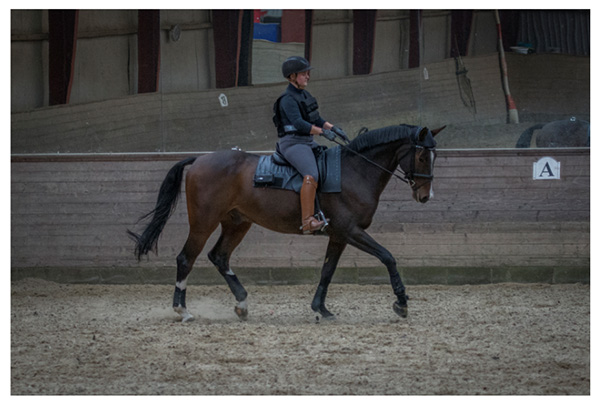Study Examines Equine Response to Rider Weight Increase
International Society For Equitation Science (ISES)
Rider Weight on Horses’ Welfare
Equine behavioral and physiological responses to rider weight increases
Previous studies have found that physiological responses and gait symmetry parameters are negatively affected when horses carry heavy riders, for example when the rider:horse weight ratio increases from 20 – 35% (Stefánsdóttir et al., 2017).
New research should help shed more light on how increased rider weight may affect a horse during exercise under saddle, looking at lower rider: horse weight ratios, which are more common for warmblood horses.
Janne Winther Christensen, from Aarhus University in Denmark, and her research team looked at the impacts of an acute increase in rider weight on horse behavior, physiological responses, and gait symmetry. The initial results of this study were presented on August 19, 2019, at the 15th annual International Society for Equitation Science (ISES) conference held at the University of Guelph.
Christensen explained, “The effect of rider weight on horse welfare is much debated and is likely affected by a number of factors including horse type, work intensity, horse training level, and rider skills.”
The study included 20 rider-horse combinations, and the researchers asked riders to complete a standard dressage test in a balanced cross-over study. The riders rode with no additional weight, or with an extra 15% or 25% of their body weight added to a vest. The horses’ heart rate, salivary cortisol, gait symmetry and behaviors (e.g. head tossing, tail swishing, mouth opening) were measured during the test.
The researchers found that the increased rider weights did not significantly affect the heart rate, salivary cortisol, behaviour and gait symmetry of horses. It should be noted that the maximum rider: horse weight ratios fell between 15 – 23% and the exercise intensity was relatively low. Christensen says, “Thus, within this weight ratio range and during light to moderate exercise, acute increases in rider weight did not induce changes in the parameters analyzed so far.”
The study also compared rider symmetry measured on the ground with their symmetry on horseback when riding with and without additional weight. On ground symmetry was measured as weight on left and right leg respectively, while standing on two identical bathroom scales. In addition, their mobility and balance when sitting on a gymnastic ball was scored based on their ability to perform standardized exercises. Poor mobility on the gymnastic ball was associated with weight asymmetry, i.e. the poorer the mobility the larger the weight asymmetry.
Rider crookedness in the saddle was measured using a saddle pressure mat. Almost all riders (19/20) had more weight on the right side of the saddle. Crookedness correlated significantly with weight asymmetry on the ground, but only in the 0% weight treatment, and not when the riders rode with an additional 15 and 25% weight, suggesting that artificial addition of weight might make some riders less crooked as they become more aware of their relative asymmetry. Thus, a simple weight symmetry test with two ordinary bathroom scale weights reflects rider crookedness in the saddle and can help riders become aware of their imbalance. Lack of mobility of the pelvis on a gymnastic ball also reflects this imbalance.
Kate Fenner, ISES council member, was enthusiastic that Christensen attended this year’s conference to share the results. Fenner says “We know that there is a great deal of interest in the potential effects of rider weight on equine welfare. We’re happy that we are able to provide a meeting area for researchers to share new findings like these each year, and hopefully spark more collaborations and research in these areas.”
Have you calculated your rider:horse weight ratio with your usual mount? Try it out by dividing your weight by the weight of the horse. Do you fall within the weight ratios examined in this study?
Save the date:
The 16th International Society for Equitation Science Conference
August 11-14, 2020
Hartpury University, United Kingdom
“Succeed with science: performance, practice and positive wellbeing”
www.hartpury.ac.uk/equitationscience2020
The International Society for Equitation Science (ISES) is a not-for-profit organization that aims to facilitate research into the training of horses to enhance horse welfare and improve the horse-rider relationship. www.equitationscience.com











